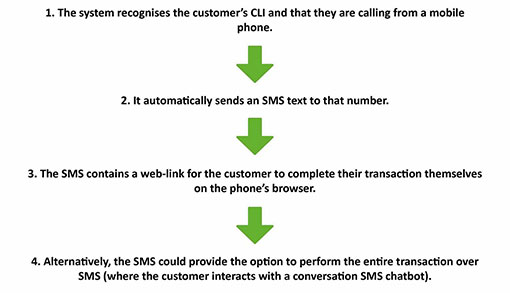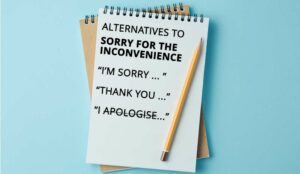Adam Jackman of Connect Managed presents five ways of shortening you call queues and improving the customer experience.
Does anyone really believe queue messages which repeat “your call is important to us…”?
We have all heard it, in between short snatches of tuneless elevator music, while waiting for our call to be answered. Most of the time we are trying to either pay a bill or resolve an issue that’s important to us, and have limited spare time available.
In the industry these announcements are called ‘comfort messages’, but are they actually providing comfort to the caller?
Maybe, if the message is played just once and the call is answered promptly, we accept the message as being sincere. Too often it is played repeatedly, every thirty seconds or so on an endless loop – if we have called at a busy time we could be forced to listen to it many, many, times.
In these instances, it is understandable that the caller feels irritated by the time an agent answers. In the worst cases, the agent will have to placate the caller, wasting valuable time that could be spent answering further calls.
Is it time to dispense with these comfort messages? We can certainly provide a much better service for the caller with a range of other options.
The Rise of Customer Service Expectations
Customer experience is closely linked to customer loyalty, satisfaction and advocacy, with poor customer service having a growing impact on customers’ buying decisions.
Our growing need for “instant” customer service makes delivering excellent customer experience more complex than ever before.
If a customer exceeds their acceptable call wait time, the knock-on effects could hit your bottom line:
- Ability to Up-sell: The majority of customers will spend more with a company who has a history of providing positive customer service.
- Customer Retention: Existing customers expect excellent customer service every time they need to contact you. If you don’t meet their expectations, your competitors will be ready waiting to take them from you with enticing offers. Building loyalty through customer experience will make them more loyal towards your company, and more likely to remain a customer.
- New Customers: Excellent customer service is a key factor when new customers are making a buying decision. With the prevalence of social media sharing and review sites, it’s easy for customers to see which companies are exceeding and which are falling short in customer service.
- Detractors: Customers are more likely to share a bad experience than a good one, so every call matters. Again, social media makes it very easy for anyone to reach a large audience, perhaps potential customers, which could have a lasting effect.
The Five Alternatives
1. Self-Service
Any inbound enquiry that requires a simple, transactional, repetitive action should be the first to be considered for self-service.
Tailoring your customer experience strategy to the customer journey by offering self-service in the channel your customers are using (i.e. telephone in this case) provides a much better customer experience and adoption rate.
A deflection to a different channel on the same device should be considered. For example:

The customer completes the transaction without the need to queue or to speak to an agent. This reduces demand for agents and saves your business money.
Once a customer has successfully used this method and enjoyed the experience, it is likely that the next time they will return to it directly. The initial call “deflection” becomes an ongoing call “avoidance”.
2. Expected Delay
One of the simplest alternatives is to tell the caller the expected delay. This doesn’t have to be a totally accurate figure, and it is best to be cautious with the time provided.
It is counter-productive to tell the caller that there will be a ten-minute delay when in reality it is closer to twenty.
When given this information, the caller can decide whether they want to continue to hold, or call again at a more convenient time.
3. Quiet Times
All contact centres have periods of the day where the call volumes are much lower, and a message can be added directing callers to these quiet periods.
Mentioning the quiet times is always a more positive message than suggesting avoiding the busy periods.
4. Position in Queue
If you have a call centre where all calls are dealt with on a first come, first served basis without any call prioritisation, you could consider telling the caller their position in the queue.
This can be perceived negatively, especially if the queue size is large, but from the caller’s perspective, they can hear that they are progressing through the queue. It helps to set the expectation of when the call is going to be answered.
5. Callbacks
A popular way to keep callers happy is by using callbacks. The caller’s position in the queue can be preserved, or the contact centre can choose to complete callbacks during quieter periods.
You could use a mix, or even all, of these options. The added bonus is that they can help to reduce your call costs, especially if you are using a Freephone number, and will also reduce the peaks in calls.
But the biggest benefit is that any of these options will improve your customer service by showing your customer that they are important to you, rather than just telling them (repeatedly).
How to Successfully Map Your Contact Centre Environment to the Customer Journey
Your customer journey map will likely reveal that the customer journey has changed significantly from any previously documented versions.
The contact centre remains at the centre of this process, but it is no longer just a physical location with agents on phones.
Instead, it represents an amalgam of technologies, processes, people and skills that can make or break a brand’s reputation.
With your customer journey map in hand, you can begin to align your contact centre environment with the moments of truth or customer pain points to better serve your customers and improve customer satisfaction.
Author: Robyn Coppell
Published On: 21st May 2019 - Last modified: 19th Jul 2022
Read more about - Guest Blogs, Connect Managed





































